|
The majority of the population, and even most medical doctors, are not aware of the health issues caused by mold toxicity. Allergies are typically the only symptom that conventional medical doctors may link to mold. Even if they run an IgE allergy panel and it comes back positive for a mold allergy, they will likely just refer you to an ENT or an allergist. This is what happened with my son. During his yearly check-up, I mentioned he was dealing with allergies and suspected hidden mold in our home as the cause. The doctor ran an IgE allergy panel, which came back positive for mold and oak allergy, and then referred us to an ENT physician.
Let's pause here. Suppose I took my son to get an evaluation. I can guarantee the only treatment options offered would be a steroidal nasal spray and possibly the removal of his tonsils and adenoids. This is the typical approach in conventional medicine: they look for a diagnosis to prescribe a drug or surgery to alleviate symptoms. That’s it. Occasionally, you might find a practitioner who advises you on testing your home for mold and provides resources to help the body detox from mold. Unfortunately, such cases are rare, and most individuals must seek advice elsewhere. Mold toxicity, however, goes far beyond allergies. Here are some signs and symptoms of mold toxicity:
When people hear about mold, they often think of mold growing on food or in the shower. While that type of mold can affect health, the mold that causes chronic health issues is often hidden. This mold lurks behind walls and in crawlspaces, significantly affecting indoor air quality. Chronic exposure from water-damaged buildings is the type of mold I am referring to. Thyroid-Mold Connection If you look at the list of signs and symptoms of mold toxicity, you can identify several that are commonly associated with thyroid disease. While it is common to suffer from thyroid symptoms for many years before enough damage is done to the thyroid to warrant a diagnosis, the thyroid problem is not the ultimate issue. That’s why many individuals remain symptomatic even after being placed on thyroid medication. It is essential to address the underlying cause of harm to the thyroid gland. Mold is just one piece of the puzzle, as there are many other factors to consider. Mold Testing My favorite urine test for detecting mycotoxins in the body is the Vibrant Wellness Mycotoxins test, which tests for the presence of 29 of the most common mycotoxins produced by mold. This test has been invaluable in helping my clients, as well as my family, get answers to their chronic symptoms. Summary Mold toxicity is a significant and often overlooked health issue that extends beyond common allergies. Chronic exposure to mold, especially from water-damaged buildings, can lead to a wide range of symptoms, including those commonly associated with thyroid disease. Addressing mold toxicity is crucial for proper thyroid health, as simply treating thyroid symptoms without addressing the underlying cause often proves ineffective. Utilizing comprehensive mold testing, such as the Vibrant Wellness Mycotoxins test, can provide critical insights and help guide effective treatment strategies. As a functional medicine practitioner, I often find that the root causes of chronic gut issues can primarily be traced back to three main categories: pathogenic infections, food sensitivities, and toxins. The interconnected nature of these elements contributes to the development and persistence of uncomfortable symptoms, ultimately leading to a compromised gut health. Let's delve deeper into these components, shedding light on the intricacies of how they impact our gut health. Pathogens and Food Sensitivities Our digestive tract is a complex ecosystem teeming with microorganisms. An imbalance or intrusion of certain pathogens such as bacteria and parasites can wreak havoc on this delicate system. The subsequent symptoms may include bloating, heartburn, constipation, diarrhea, and abdominal pain. These signs often mimic those related to food sensitivities, making it necessary to discern between the two. Indeed, food sensitivities present another major contributor to chronic gut issues. Certain foods may trigger an immune response leading to inflammation and irritation of the gut lining. This can result in similar manifestations to pathogenic infections, reinforcing the importance of proper diagnosis and personalized nutritional guidance. Toxins The third piece of the puzzle is toxins, particularly mycotoxins, which are toxic compounds produced by certain types of mold. These potent substances can significantly suppress the immune system, further hampering the body's capacity to combat other gut-related issues. Mycotoxins, given the right conditions, can colonize the gut, contributing to an overgrowth of the yeast Candida. This overgrowth can cause dysbiosis, a term used to describe the imbalance of gut microbiota. With this imbalance, the gut provides the ideal environment for pathogens to thrive, and the cycle of gut health disruption continues. In essence, the chronic gut issues we often encounter can be ascribed to a complex interplay of pathogenic infections, food sensitivities, and toxic influences. Understanding and addressing these factors allows us to restore gut health, laying the groundwork for overall wellness from a functional medicine perspective. As we strive to unravel the complexities of the human body, this holistic and integrative approach to health is proving to be a cornerstone of sustainable healing. Many individuals, in an effort to address their persistent gut problems, initiate their health journey with an elimination diet. This approach is a simple and cost-free method to identify whether certain food items are causing discomfort. However, if their symptoms persist, it's not uncommon for them to seek advice from a healthcare professional. Regrettably, I've observed that several of my clients often hit a wall when it comes to getting conclusive answers. The testing protocols followed by many doctors often fail to identify less-common culprits like parasites. Even when these tests do account for such organisms, the elusive nature of these pathogens can make them difficult to detect. As a result, I often find myself navigating by the compass of my clients' symptoms, which guide me toward the best strategies to support their health journey. Suppose we identify that pathogens may be a potential cause of the ongoing gut issues. The next question naturally arises: what's causing these invaders to persist? The answer often lies in the terrain of the body itself. An environment conducive to these microorganisms' persistence usually originates from the presence of toxins. Therefore, obtaining a comprehensive intake questionnaire on my clients environmental exposures, coupled with testing where needed, is part of addressing the holistic picture of the individual. Because it's not just mycotoxins I'm worried about affecting the microbiome, but also heavy metals and environmental chemicals as well. Further, addressing gut health comprehensively means not only combating the pathogens with antiparasitic herbs and antifungals, but also supporting the body's detoxification mechanisms. To accomplish this, I employ the use of specific binders. These substances are capable of latching onto and eliminating particular toxins, thus reducing the risk of reinfection. By doing so, we not only deal with the immediate issues at hand but also cultivate a gut environment less conducive to the recurrence of such problems. Incorporating this understanding into our functional medicine perspective, the journey to optimal gut health becomes clearer. The interconnectedness of pathogenic infections, food sensitivities, and toxins, coupled with our body's unique responses, underscores the necessity of a personalized, holistic approach. By navigating this complex health maze with mindful strategies, we can help pave the way towards improved gut health and overall well-being. It's not just mycotoxins that can influence the microbiome; heavy metals and environmental chemicals can also significantly impact it. A great place to start exploring some potential root causes to your underlying gut issues is with a comprehensive stool analysis. I've helped many clients reverse their chronic gut issues using this test coupled with a detailed intake questionnaire and individualized diet recommendations. Schedule a enrollment call today to learn more. Why is weight gain so prevalent in people with Hashimoto's? The answer lies in the nature of the disease itself. Hashimoto's is an autoimmune condition where the thyroid gland is targeted, impairing its function. As the thyroid is the chief regulator of our metabolism, when it's underactive, as in Hashimoto's, it can lead to an energy slump, making weight loss a daunting task. However, weight loss is achievable if we focus on the root causes of the symptoms that's ultimately creating the autoimmune disease in the first place. As a functional medicine practitioner, I fully believe that our bodies are extremely intelligent. We can reverse the autoimmune process if we figure out what's triggering it in the first place.
1. Gut Health and Dysbiosis Our gut is home to billions of bacteria that significantly influence our health, from mood regulation to immune response and yes, weight control. An imbalance in our gut microbiota, known as dysbiosis, can lead to a series of health issues including bloating, nutrient malabsorption, and even autoimmune conditions like Hashimoto’s. Specific culprits include parasites, candida, and Helicobacter pylori (H.pylori), a bacterium associated with stomach ulcers. To rebalance your gut, a personalized diet rich in probiotics and fiber, coupled with targeted antimicrobial and antiparasitic treatments may be necessary. This approach can help restore a healthy microbiome, improving digestion and absorption, which are vital for weight regulation. 2. Mitochondrial Dysfunction Mitochondria, our cellular powerhouses, play a crucial role in energy production. Environmental toxins, heavy metals, and mycotoxins, harmful substances produced by certain molds, can damage mitochondria leading to dysfunction. This dysfunction can exacerbate the energy slump and weight gain commonly seen in Hashimoto's. Detoxification protocols specifically targeted at the toxin, alongside the use of specific nutrients, can support the restoration of mitochondrial function. Nutrients like CoQ10, N-acetylcysteine, humic and fulvic acids, and magnesium may be beneficial in restoring your cellular energy and kick-starting your metabolism. 3. Inflammatory Diet and Food Sensitivities Diet plays a significant role in the management of Hashimoto's and its associated weight gain. Gluten and dairy are notorious for causing inflammation in a lot of individuals suffering with Hashimoto's, potentially leading to intestinal permeability (leaky gut) and exacerbating autoimmune response. These food sensitivities can contribute to inflammation, leading to weight gain and other symptoms. Implementing an anti-inflammatory diet, rich vegetables, fruit, grass-fed, pastured, and organic proteins, and healthy fats can help manage inflammation. Identifying and eliminating food sensitivities through elimination diets and testing can also provide a clear path to symptom relief and weight loss. Each individual is unique. Your root causes could be completely different than that of someone else suffering with Hashimoto's. Functional lab testing is in my opinion one of the only ways to determine what's triggering the immune response. Thus, it's essential to work with a functional medicine practitioner who can guide you in understanding your body, your condition, and help devise a personalized plan that suits your needs. With the right approach, it is possible to alleviate symptoms, lose weight, and live healthily with Hashimoto's! If you're ready to take a deeper look into your health so you know exactly what you need to focus on, then my signature program, Integrative Hashimoto's Solution is the answer! If you're already addressing these areas in your life, then perseverance and patience is key! Remember, you did not develop this autoimmune condition overnight. As a thyroid expert, I understand that one of the common challenges faced by individuals with Hashimoto's, an autoimmune thyroid condition, is the struggle to trust their own bodies. The immune system attacks the thyroid gland, leading to a range of symptoms and leaving individuals feeling betrayed by their own bodies. However, rebuilding trust in your body is a crucial step towards healing and reclaiming your health.
Hashimoto's is a complex condition that can leave individuals feeling helpless and frustrated. The symptoms, such as fatigue, weight gain, hair loss, and mood swings, can impact daily life and self-esteem. It's easy to feel like your body is working against you, leading to a limiting belief that you can't trust your own body. As a Functional Medicine Practitioner and Hashimoto's warrior, I want to assure you that you are not alone in feeling this way. Many individuals with Hashimoto's share similar struggles, and it's important to acknowledge and address this belief in order to move towards healing. Here are some strategies to help you rebuild trust in your body:
In my Integrative Thyroid Solution 1:1 program, I cover all of this and more. If you feel you need support to finally be able to have the confidence you once had in your body, reach out today! In 2010, I started my career as a clinical dietitian at a hospital after completing my internship. Little did I know that my health would take a dramatic turn and set me on a path of healing that would eventually lead me to create my own program, the Integrative Hashimoto's Solution, to help others with similar health challenges.
It all began with a severe allergic reaction to Penicillin. Just a few days into taking antibiotics for strep throat, I broke out in a rash all over my body. This event triggered a cascade of health issues that I had never experienced before. Acne worsened, bloating and fatigue set in, and my mood became imbalanced. As if that wasn't enough, in 2013, I was diagnosed with hyperparathyroidism, which resulted in the removal of half of my thyroid due to an adenoma on the inside of my thyroid. This surgery took a toll on my thyroid function, and I was subsequently diagnosed with hypothyroidism. I was emotionally, mentally, and physically exhausted, and I desperately wanted to heal my thyroid naturally to avoid medication and reverse the myriad of gut, skin, energy, and mood issues I was facing. I tried various detoxes, supplements, probiotics, and elimination diets with minimal results. I was at a loss, unsure of how to reverse my symptoms until the diagnosis of hypothyroidism made me realize that my symptoms were likely related to a thyroid problem that had gone undetected by my doctor. This realization fueled my desire to learn everything I could about hypothyroidism and explore alternative approaches to healing. Despite my initial reluctance, I started thyroid medication as my husband and I were planning to have a baby and I knew it was necessary at that point. My skin cleared up, my energy improved, and I was able to conceive without any complications. However, about six months postpartum, my symptoms returned with a vengeance. I was dealing with crippling fatigue and mood swings, despite normal lab results. I also lost a significant amount of weight and was below my pre-pregnancy (healthy) weight by about fifteen pounds. This is when I discovered functional medicine and began ordering my own labs. I learned that I had multiple underlying issues, including gluten sensitivity, parasites, vitamin and mineral deficiencies, and environmental toxicities and mold. Armed with this information, I diligently followed specific protocols to address these issues, and over time, my severe fatigue, mood imbalances, gut problems, and weight issues improved. My personal health journey and my passion for helping others inspired me to start my own practice as a Certified Functional Medicine Practitioner. This eventually led me to create the Integrative Hashimoto's Solution, a program designed to help women with hypothyroidism and Hashimoto's reverse their symptoms and achieve optimal health. Through my own experiences, I have learned the power of an integrative approach to health and the importance of addressing the root causes of health issues rather than just managing symptoms. I have seen firsthand the transformation that can occur when we take a holistic approach to healing, addressing not only the physical but also the emotional and mental aspects of health. If you are struggling with hypothyroidism, Hashimoto's, or any other health challenge, know that there is hope for healing. It may require exploring alternative approaches, being your own advocate, and taking a personalized and integrative approach to your health. I am living proof that it is possible to overcome health challenges and thrive, and I am committed to helping others on their healing journey too. Are you ready to take control of your health and transform your life? Join me on this journey of healing and empowerment. Let's work together to achieve optimal health and vitality. Gluten has been the topic of hot debate by a growing number of healthcare providers.
The literature is overflowing with the detrimental impact gluten has on the intestinal wall. When you eat gluten, your body produces a molecule called zonulin. The increase in zonulin is linked to increased intestinal permeability aka: leaky gut. Leaky gut can create a cascade of damaging health issues including autoimmune disease and many inflammatory diseases. To read the full article from Functional Medicine University, click here. Compliments from Functional Medicine University. It is never just one thing that causes your thyroid dysfunction. When I first started on this journey to heal my thyroid, when I found something on a lab test such as SIBO or gluten sensitivity, I was like, "This is it! I will just do x, y, and z to address whatever it was that had showed up and I would be fixed." I thought I would finally be able to be past all of this. While I greatly improved my health, it was never enough to fully move past all of the symptoms I was dealing with.
Thyroid issues are very complex. Prolonged stress, whether be it emotional, physical or environmental, is often the catalyst for someone to go on and develop some sort of chronic symptom that's stemmed from a dysfunctional thyroid gland. Emotional stress could be coming from your career or your family situation and an environmental stress could be from chronic mold exposure or from a chemical such as glyphosate. Physical stress could be due to the increased demands for thyroid hormone during pregnancy. Although these are just a few examples of stressors/triggers in the body, there are so many that it can become very overwhelming at times to try and pinpoint. Some very common symptoms of early thyroid damage could be anything from frequent headaches, muscles aches, fatigue, weight gain, skin issues, depression, and constipation and are often ignored because they’re not severe enough for you to fully pay attention and investigate. It’s not until these symptoms become a little louder that you may be called to visit your doctor. Unfortunately, many leave empty handed with no explanation to the cause of their symptoms and are told everything is normal. And there is a good chance they were given an antidepressant because their doctor believes they're just depressed. Yea, I've heard this too many times to count. Once the body has been under a significant amount of stress for a prolonged period of time, our immune defenses get weakened, mitochondria get damaged, inflammation takes over from all of the oxidative stress, and we pick up things like bacterial, pathogenic, and viral pathogens if we haven't already that further weaken our immune defenses and create even more inflammation. It’s a vicious cycle. We may start having reactions to foods that we never had before and begin to develop more symptoms before enough damage is done to fully reflect it in the labs. I say this because thyroid dysfunction happens years before it’s reflected in the TSH, the most common thyroid marker that conventional medicine doctors use to check the function of the thyroid gland. It’s for this reason that many cases of thyroid dysfunction get missed. If you want to learn more on this, you can click here. The stress bucket of that individual is now overflowing, and you have someone for example who has multiple chemical toxicities, a gluten intolerance, parasites, multiple nutrient deficiencies, and H. pylori. Removing just one of the above problems will likely not be enough to reverse your thyroid symptoms and optimize your thyroid function. This is why a holistic approach is needed almost every time. True healing is a journey. The journey is not always easy, but I promise it's very much worth it! If you are determined to heal your thyroid dysfunction at the root cause, please schedule a discovery call to learn more. One common lab that gets checked by physician’s, but also gets passed off as normal when it is far from normal is thyroid stimulating hormone (TSH). This not only prevents a lot of people from getting properly diagnosed so proper treatment can be provided, but it also prevents those who would prefer to take a holistic approach to reversing their condition in the early stages before it progresses to full-blown thyroid failure.
Many physicians are using outdated normal ranges for TSH that are present on the lab, so please be sure to ask for a copy of your results and review them yourself now that you have this information available to you. I have a handful of clients who I have retested their thyroid using a full panel along with using the optimal range for TSH, which is a TSH between 0.5-2.0 ulU/mL, and was able to pick up Hashimoto’s or thyroid disease, which was not long after their physician missed it on their lab. To read the full article from Functional Medicine University, click here. Compliments from Functional Medicine University. I’m back for part three of my series on elimination diets! In Part 1 I explained what an elimination diet is and why it can be so effective at getting closer to the root cause of your symptoms, and in Part 2 I reviewed the top foods that should be eliminated and where to start based on your current health. The topic of food sensitivity testing gets brought up a lot when working with clients. Here are a few key points to consider when it comes to testing that can help you decide if it’s right for you in your health journey, when it’s suggested to test, and my preferred labs for testing. What exactly is a food sensitivity and how can you test for it? A food sensitivity is very different from a food allergy. Food allergies can be grouped into two general categories: IgE-mediated and non-IgE-mediated. The IgE-mediated reactions trigger an immediate response and arise up to 2 hours of ingesting the food. 1 Symptoms are extreme and sometimes life-threatening and can include tingling of extremities, wheezing, coughing, tightening of the throat, nausea, abdominal cramps, and diarrhea. 2 Food allergies are often easy to identify and can be confirmed with the use of a skin prick test or measuring IgE antibodies to that particular food. These results are very often reproducible when tested. Non-IgE-mediated reactions are delayed food reactions. These type of food reactions are what food sensitivities fall under. They are more difficult to diagnose because symptoms are often vague and can appear up to 3 days after ingestion of the offending food. For example, you may eat eggs on Saturday and experience joint pain on Tuesday. There are many symptoms of a food sensitivity, which I reviewed in part 1 of the series. Since there are no confirmatory diagnostic tests to diagnose these type of reactions, diagnosis is often based off history and resolution of symptoms with food avoidance. A delayed reaction can trigger IgG, IgA, and IgM reactions in your system. 3 Labs that do food sensitivity testing commonly use IgG and IgA antibodies. Food Sensitivity Testing No food sensitivity test is perfect. This is why the gold standard for identifying food sensitivities is not actually through any specific lab, it’s by doing a very strict elimination diet as it is the most accurate way to test your tolerance against a food. However, that's not to say that you shouldn't consider testing for food sensitivities. Here are a few things to consider when looking for a lab to test. Foods in their raw form can have a different effect on someone vs if that food had been cooked. Researchers have demonstrated that during food preparation, cooking and processing, chemical/molecular changes occur. 4 Many food sensitivity tests use IgG antibodies tested against raw food antigens only. So it’s quite possible that you could get a false negative test if the lab is not testing both raw and cooked foods. For a test to be accurate, you want it to be consistent and be able to have reproducible results. Does the lab run samples twice to ensure results are consistent and reproducible? The lab that meets the above criteria that I am confident to use in practice is Cyrex Labs. When should you test? I suggest testing after you have already done an elimination trial of some of the top foods known to cause a reaction like gluten, dairy, and eggs and if you continue to experience symptoms. Further, just because testing can be helpful in narrowing down other potential trigger foods doesn’t mean you should jump to testing right away. In fact, if you do a food sensitivity test that is measuring against a large list of foods while you have many symptoms and/or a chronic illness like an autoimmune disease, there is a greater chance for the results to not be as accurate. For instance, you test against 80 food antigens and 20 or more of those foods come back positive. Do I suggest you eliminate all of them? Not necessarily. This could be reflective of leaky gut, so it may not be necessary to remove all 20, just the top ones that you know you likely are reacting to along with the top offenders like gluten and dairy and begin a protocol to start healing your gut. Studies have demonstrated an association between increased intestinal permeability and the development of new-onset food allergies. In one study, this was observed in patients following liver and heart transplantation. Transplant patients that were on the immunosuppressant tacrolimus have been shown to have increased intestinal permeability and elevated levels of food antigen-specific IgE. Interestingly, some of these patients developed new-onset food allergies. 5 I never consider testing for food sensitivities in my client at the beginning because this is when they’re the most inflamed and symptomatic. I will typically reserve food sensitivity testing towards the end after we have explored other causes into their symptoms, such as pathogens, worked on healing their gut, and ruled out the top offending foods. Is food sensitivity testing necessary? Not necessarily. However, here are a few cases where it can be very helpful:
Further, many foods cross-react with gluten, and it can sometimes be very difficult for someone to eliminate all of these foods and then introduce each one back separately over a period of time. Cyrex, Array 4 not only tests for cross-reactive foods, but they also test for foods that are typically newly introduced on a gluten-free diet. For example, teff, sorghum, and buckwheat may cause some people’s immune system to react against the new food as if it were a foreign invader or due to overconsumption of these gluten-free foods. In either case, it’s not uncommon for someone to have additional sensitivities to foods when they have gluten sensitivity or Celiac disease and testing can be very helpful in getting these patient’s better. References
You can gain a ton of insight into the causes of symptoms if you tune into the messages your body is sending out when you experiment with food. Symptoms manifest long before a disease does, so this is why it’s so important to pay attention to the warning signs your body is giving you rather than masking symptoms with drugs. Further, some of these foods are causing damage to different parts of your tissues, so once identified, you can potentially prevent an autoimmune attack on your body or even reverse the damage done by autoimmunity. In my first post, What is an Elimination Diet and What You Should Know Before Starting, I review the common symptoms of food sensitivities and explain how to do an elimination diet correctly so that you can get the most out of what it can offer. In this post, I’m going to explain the why behind the foods that should be eliminated, where to start based on your current health, and what foods you should add into your diet to help repair your gastrointestinal lining and to nourish you in the process. Foods to Eliminate To keep it simple, you can do it one of two ways: basic elimination or advanced. If you’re someone who feels overwhelmed with the idea of doing a food elimination diet, want to test the water first without diving in, or are dealing with some mild, but annoying chronic symptoms, then starting with the basic food elimination is the route I would suggest going. Most of my clients who start with this elimination notice huge gains in their health pretty quickly. Now, if you have already done a food elimination diet and have not had results, are suffering greatly with digestive issues, or have a full-blown autoimmune attack, then it’s recommended to start with the advanced elimination. There is no right or wrong way to do it; just get started somewhere and build from there if you need to. Basic Elimination (The top offenders) The top two foods that should be eliminated include gluten and dairy. They are by far the two foods that cause the most issues in people. I have personally seen this in practice, and just with the elimination of these two foods, my clients have had profound improvements in their health. The most common association to gluten sensitivity is with Celiac disease. However, what is thought to be more common than Celiac disease is Non-celiac gluten sensitivity (NCGS). NCGS is characterized by both intestinal and extra-intestinal symptoms related to ingesting gluten-containing foods. 1 Symptoms of NCGS includes many, but some common ones are bloating, abdominal pain, diarrhea, epigastric pain, lack of well-being, tiredness, headache, foggy mind, and anxiety. Neurological symptoms from a gluten sensitivity are also common and can include peripheral neuropathy and cerebellar ataxia. 2 A gluten sensitivity, or even Celiac disease can develop at any time in a person’s life, so just because you’re a certain age doesn't mean anything when it comes to food-related issues. Further, the range of symptoms of a gluten sensitivity is vast, so please don’t think the symptoms are limited to just the above. Gluten has not been apart of our diet for very long as the native diet of humans consisted of mostly meat, fruits, and vegetables with very little exposure to grain. Gliadin and glutenin proteins primarily make up the structure of gluten. Gliadin is the component that is rich in prolamine and glutamine, which cannot be degraded by intestinal enzymes and triggers an immune reaction in genetically predisposed individuals. 3 The gluten-free product market has grown substantially over the years. According to Dr. Alessio Fasano, he states that the prevalence of gluten-related issues are on the rise, and based on his study, it seems that prevalence has doubled every 15 years in North America. 4 Why such an increase over the years? Well, there is no clear answer for this. However, some research and experts in the field link this rise to glyphosate. Glyphosate is the active ingredient in the herbicide, Roundup. A study done on Fish exposed to glyphosate showed that they develop digestive problems that are similar to that of celiac disease. Glyphosate has been shown to disrupt gut bacteria in animals, specifically killing beneficial forms and causing an overgrowth of pathogens. Interestingly, the use of glyphosate on wheat in the U.S. has risen sharply in the last decade, in step with the sharp rise in the incidence of Celiac disease. 5,6 My recommendations are to avoid non-organic produce, meat, and grains as much as you can. The Dirty Dozen List ranks the top twelve vegetables and fruits found to have the highest levels of pesticide residue, which is very helpful when you’re trying to make informed choices while out shopping. Having a healthy gut microbiome is essential for health as 70%- 80% of our immune system resides in our gut. 7 Protect your gut microbiome by choosing organic as much as you can. Where is gluten found, and why do some people not fully improve once it’s eliminated? When you hear of gluten, it is typically referring to the protein found in wheat, rye, some oats (must be labeled gluten-free as most are contaminated), barley, and triticale; thus foods containing these ingredients should be avoided on a gluten-free diet. Now, a big reason one may not improve when they eliminate gluten is that they may be consuming other foods that are cross-reacting with gluten. Cross-reactive foods are known to mimic gluten to the human immune system. 8 Casein (milk protein) is the most likely to cross-react and should also be removed at the same time that gluten is removed. This is imperative as many people with a gluten sensitivity also have a sensitivity to dairy. Another reason casein should be removed is that it is one of the top allergen foods in the U.S. In my opinion, you would be wasting your time on an elimination diet if you only eliminate gluten and not dairy along with it. Advanced Elimination In my first post, I discussed how leaky gut is at the root of many chronic illnesses, especially in the development of an autoimmune disease, and is a cause for the development of food sensitivities. Leaky gut is triggered by many things including certain medication like NSAIDs, stress, surgeries, gut infections like small intestinal overgrowth (SIBO), yeast overgrowth, and parasites, as well as challenging foods like alcohol and food sensitivities. When the gut barrier is inflamed and more permeable, it’s not uncommon for the immune system to react to many different foods as undigested food proteins leak through the damaged gut barrier. When someone is dealing with many different symptoms, eliminating these foods can help calm down the immune response and allow them to heal. People who have a full-blown autoimmune attack going on, meaning they’re dealing with many symptoms that are affecting their quality of life, do well when they take a comprehensive approach to a food elimination diet. This diet is well known as the Autoimmune Paleo Diet. In the Autoimmune Paleo diet, the following foods are removed:
All of these foods are either known to cross-react with gluten, are ones that are commonly known to invoke an immune response, inflammatory, or are aggravating to the gut. This diet was designed to heal the gut in addition to helping one determine additional foods they could be causing a reaction. There is a wealth of information on this diet from books to blogs that are extremely helpful when doing an advanced elimination diet such as this. I highly encourage doing your research before eliminating all of these foods or working with a nutritionist that can help you. On average, you will follow this diet from anywhere from two to six weeks, but possibly longer depending on the severity of your symptoms. In my non-autoimmune clients who have noticed an improvement in their symptoms on a gluten and dairy-free diet, but have not had complete resolution of their symptoms, I will consider other potentially problematic foods. This approach is not as comprehensive like that of the Autoimmune Paleo diet, but equally as effective. Other foods that people can commonly be reacting to include grains and eggs. Grains are a common staple in our diet, but we do not need them to survive. Grains are high in lectins and have been shown to degrade the intestinal barrier. 9 Grains that are gluten-free like rice, millet, corn, and gluten-free oats can also cross-react with gluten, just like casein mentioned above. I often suggest removing them to aid in the gut healing process on an elimination diet and testing for tolerance on reintroduction. One of the tests that I use in practice to help those determine other foods that cross-react with gluten that they could be reacting to is Cyrex Labs, Array 4. I will be going over more on this test in my next post, which is part 3 of the blog series. Eggs are a common food allergen in children, but adults can develop a sensitivity to eggs later in life, especially those who have leaky gut, so this is why I often suggest eliminating them to test for tolerance. Keep in mind that when you’re ready to reintroduce eggs, you need to introduce the yolk and white separately as reactions can be to either one. Interestingly, more people tolerate the yolks more than the whites. Now if symptoms don’t improve with the elimination of these top offending foods, I begin to look into other root causes of their symptoms that could be related to things like viruses, bacteria, parasites, small intestinal bacterial overgrowth (SIBO), toxins, etc. Other Highlights on an Elimination Diet To make the most gains from doing an elimination diet, you shouldn’t just focus on removal of the above foods. It’s important to also remove inflammatory foods and replace your diet with the highest quality, most nutrient-dense foods available to you. They will not only help to repair the gut in those with leaky gut, but it will also help provide a powerhouse of nutrition essential for optimal detoxification and cellular health. Inflammatory Foods
Food is powerful medicine. If you need someone to help you get started on a path to improving your health? You can contact me here. In optimal health, Meagan Reynolds Sources
|
Hello!I'm Meagan Reynolds- a certified functional medicine practitioner and dietitian located in Nashville, TN. After overcoming my own health challenges with hypothyroidism, I was motivated to create my own practice where I help women reverse their thyroid, gut, and hormonal issues so they can reclaim their health. Archives
July 2023
Categories
All
|



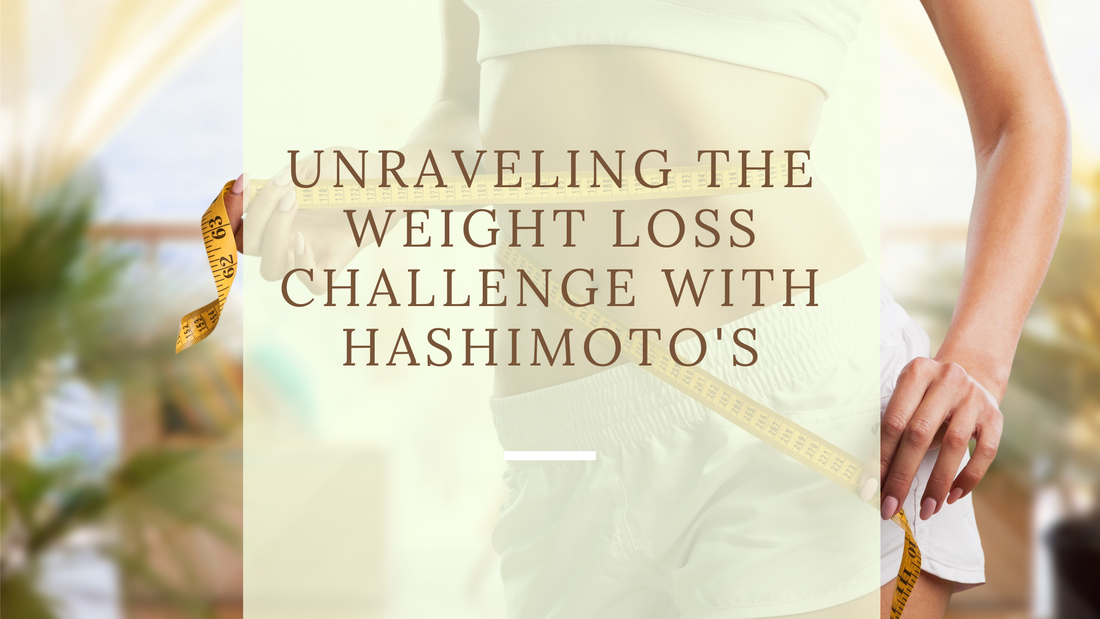



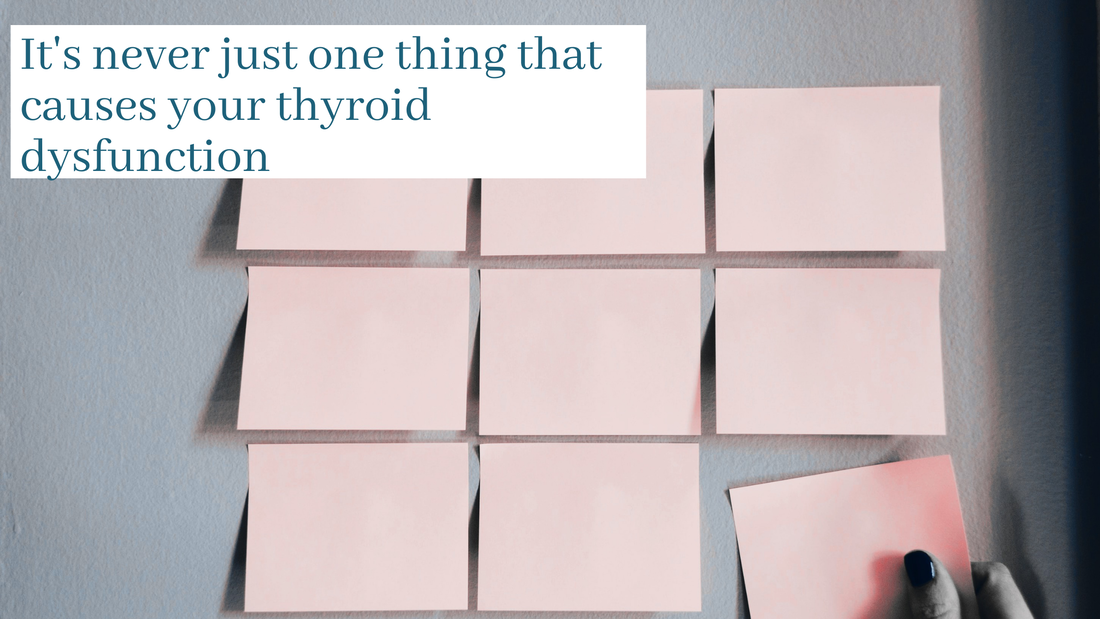
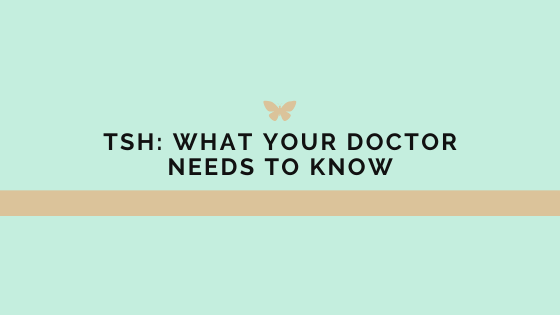
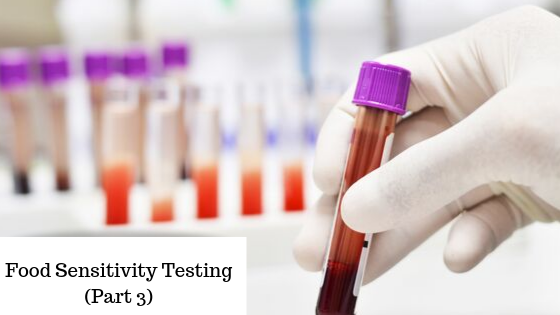
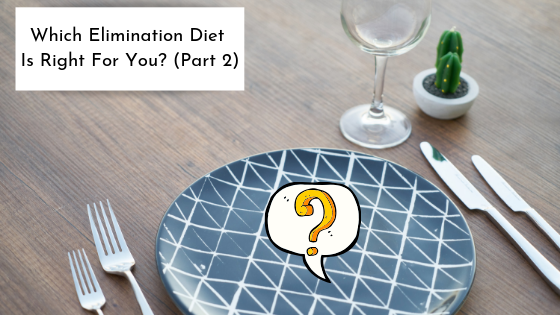

 RSS Feed
RSS Feed